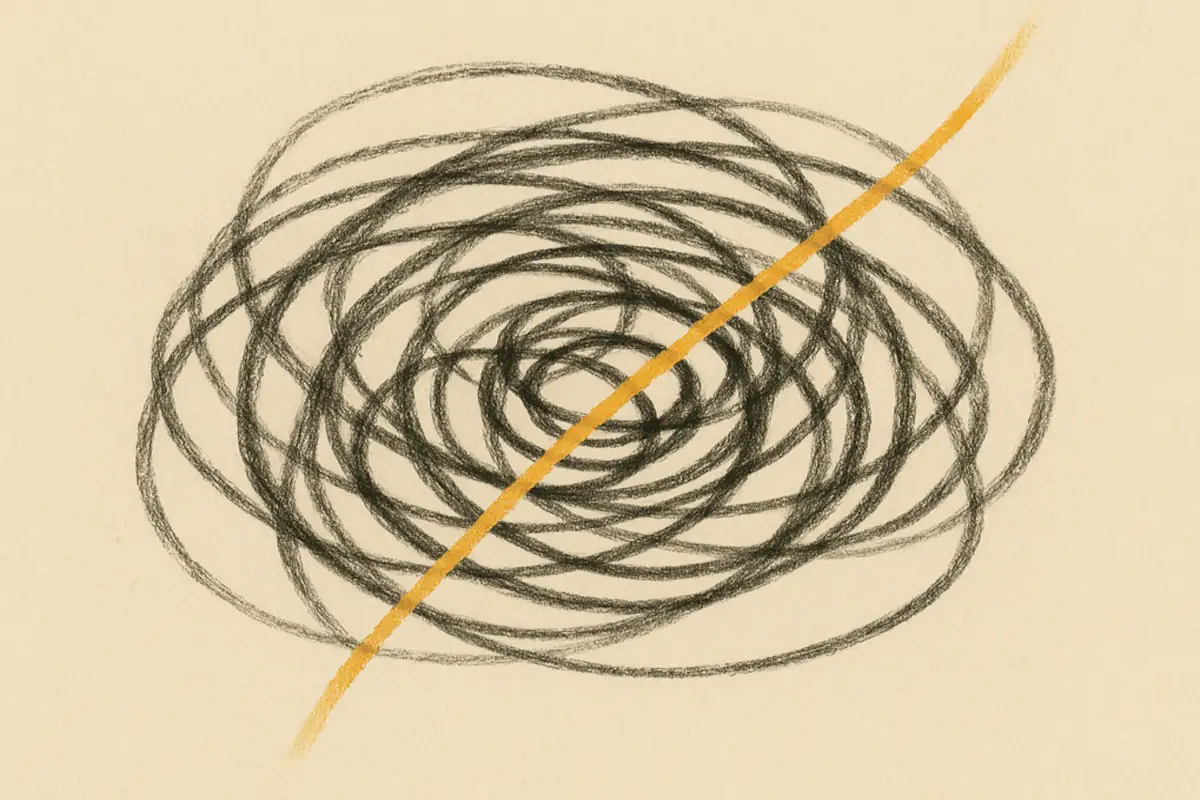How to Stop a Stress Spiral in Its Tracks with This Simple Tapping Sequence
Amplifying the Insights of Dr. Robert Holden & Dr. Gabor Maté
I. The Day That Went Wrong
By 9:14 a.m., Hannah already knew the day was a runaway train. She was at her desk, coffee cooling beside her laptop, when the email landed with a sharp ping. She clicked it open without thinking—just a subject line in bold: “Need this ASAP.”
Her stomach tightened. She scrolled down, scanning the body of the email. The request was vague, the deadline impossibly close, and it came from the one person in her company who seemed to have a talent for phrasing things like personal attacks. Her pulse picked up. The coffee suddenly tasted sour. Her shoulders rose toward her ears.
She tried to focus on the next line, but her thoughts were already colliding: How am I supposed to finish this? Why didn’t they give me more notice? What if I screw this up? What if they think I’m incompetent? Her breath shortened. Her chest felt tight. And then it started: the familiar whirlpool in her mind—what Dr. Robert Holden calls the stress spiral.
II. What a Stress Spiral Really Is
If you’ve been there, you know: one anxious thought triggers another, faster and sharper, until your brain is racing to keep up with itself. A single spark—an email, a phone call, a comment—ignites a cascade of physical and emotional responses. Heart rate spikes. Muscles tense. Mental clarity shrinks.
Holden’s research points to a simple truth: “Stress is not what happens to you; it’s your response.” And yet, in the moment, choosing a calmer response feels impossible.
Dr. Gabor Maté explains why: “Behind every burst of stress lies an unprocessed emotion or unmet human need.” In Hannah’s case, the unmet need was recognition and respect. She worked hard—too hard, sometimes—but the lack of appreciation in her workplace left her on edge. The email wasn’t just a request; it was another reminder that her value wasn’t being seen. The problem? Hannah didn’t have a way to stop the spiral once it started.
III. When the Body Takes Over
Stress spirals aren’t just mental. They’re biological chain reactions. Here’s what was happening inside Hannah’s body:
- Her amygdala—the brain’s alarm center—flagged the email as a “threat.”
- Her adrenal glands released cortisol and adrenaline.
- Blood flow shifted away from her prefrontal cortex (where problem-solving happens) toward her limbs (preparing her to fight or flee).
Result? Racing thoughts, shallow breath, and a total inability to think clearly. It’s fight-or-flight, but without an actual tiger—just a digital message.
IV. Discovering EFT Tapping
EFT, or Emotional Freedom Technique, is deceptively simple. You tap lightly with your fingertips on specific acupressure points while speaking phrases that name what you’re feeling. Research shows that tapping reduces cortisol, calms the nervous system, and helps shift mental patterns in the middle of stress.
Holden calls it “a portable stress-buster.” Maté sees it as “a way to honor emotions without being overwhelmed by them.” For Hannah, it was about to become a lifeline.
V. The Stress Interruption Tapping Sequence
Setup Statement (Karate Chop Point)
Tapping the side of her hand, she said: “Even though I feel overwhelmed and my stress is spiraling, I accept how I feel.” She repeated it three times.
Tapping Points & Phrases:
- Eyebrow: “All this stress and overwhelm.”
- Side of Eye: “I’m feeling anxious about this email.”
- Under Eye: “Racing thoughts are taking over.”
- Under Nose: “It’s hard to catch my breath.”
- Chin: “I can’t think clearly right now.”
- Collarbone: “I want to feel safe again.”
- Under Arm: “Letting go of this intensity.”
- Top of Head: “My mind is calming down.”
One round. Then a deep breath. She rated her stress again. It had dropped from an 8 to a 5.
VI. From Spiral to Stillness
She did another round, this time softening her tone:
- Eyebrow: “I’m safe right now.”
- Side of Eye: “I can handle this.”
- Under Eye: “I choose to relax.”
- Under Nose: “I’m listening to my stress.”
- Chin: “I’m open to clarity.”
- Collarbone: “I honor my needs.”
- Under Arm: “It’s okay to slow down.”
- Top of Head: “I can choose calm.”
Now she was at a 3. Her shoulders dropped. Her jaw unclenched.
VII. Closing the Loop
Stress is inevitable. Emails will land. Deadlines will change. People will say things without thinking. But with awareness, compassion, and a few minutes of tapping, you can stop a spiral in its tracks—before it takes over your day, your body, or your mind.
As Holden says: “Stress can be transformed with conscious action and gentle self-talk.”
And as Hannah learned: sometimes the simplest tools are the ones that give you your power back. The spiral doesn’t own you. You own the choice to step out of it. Your fingertips are the key.



